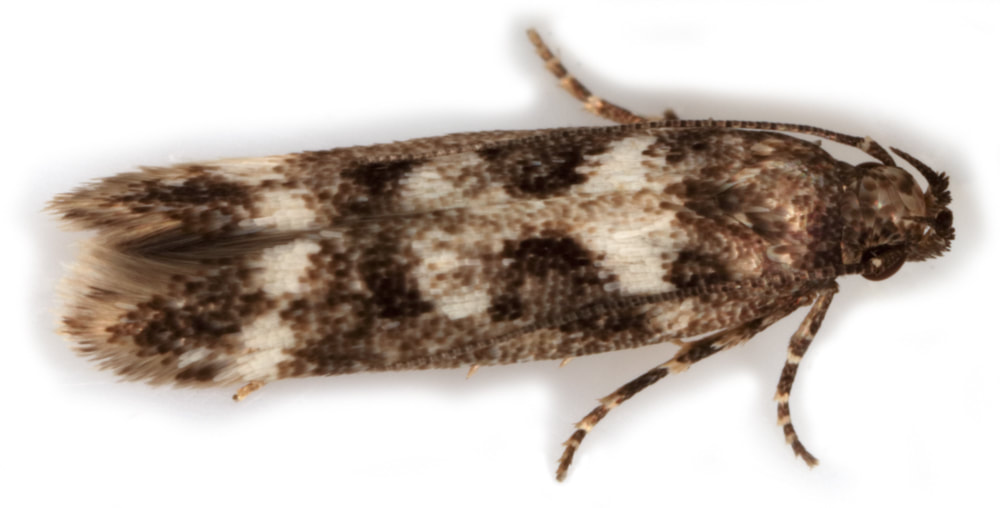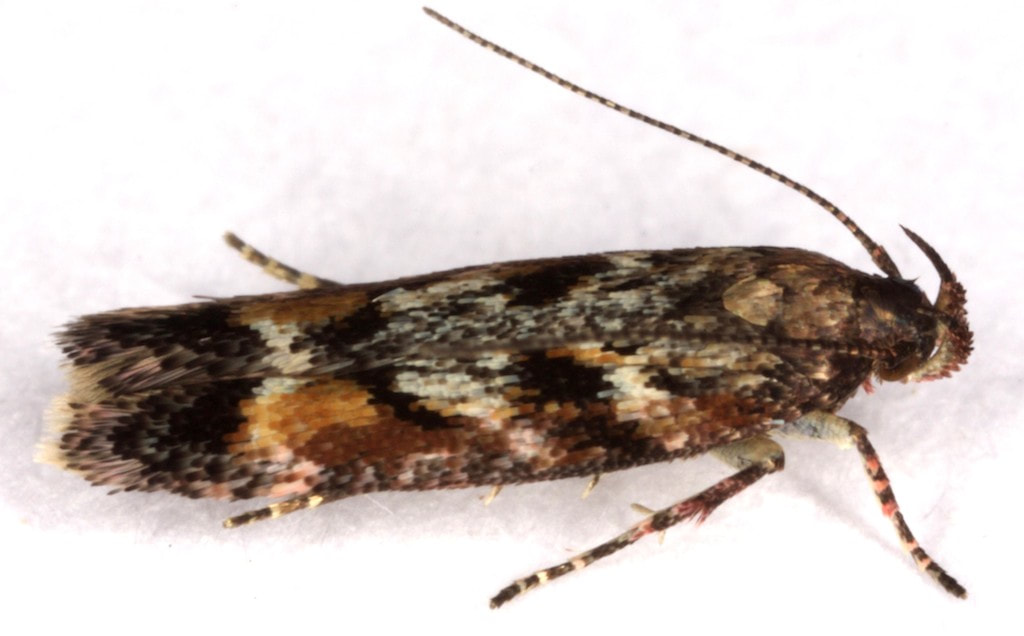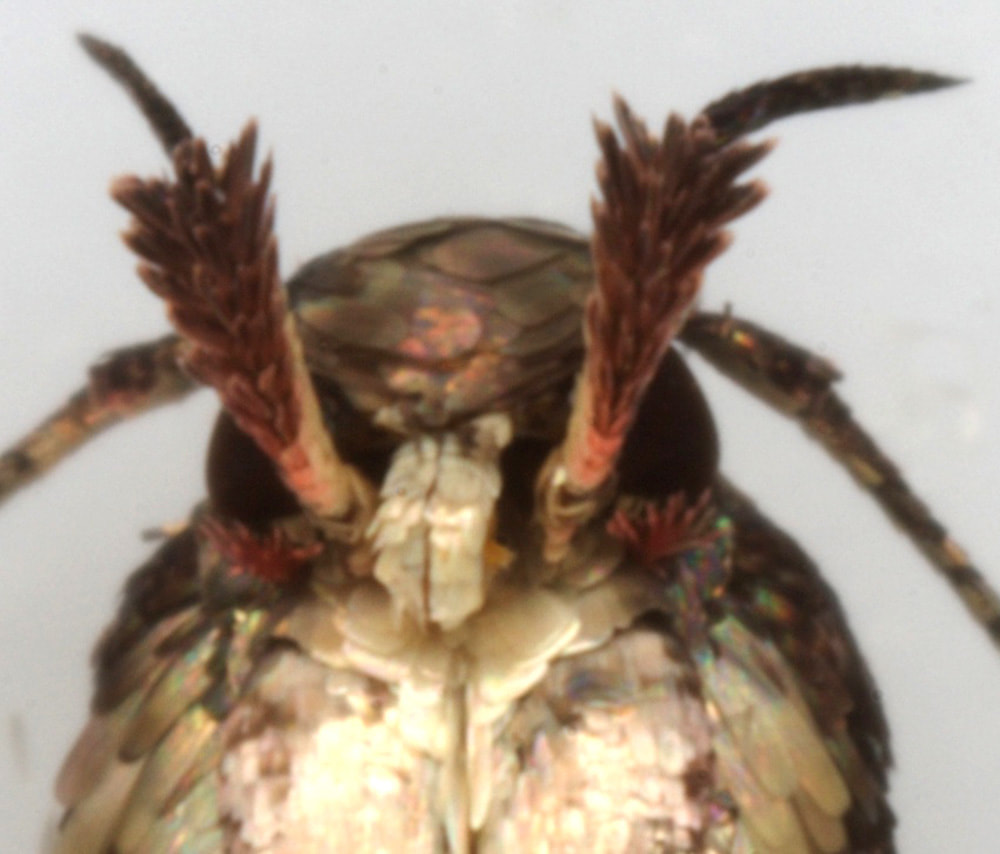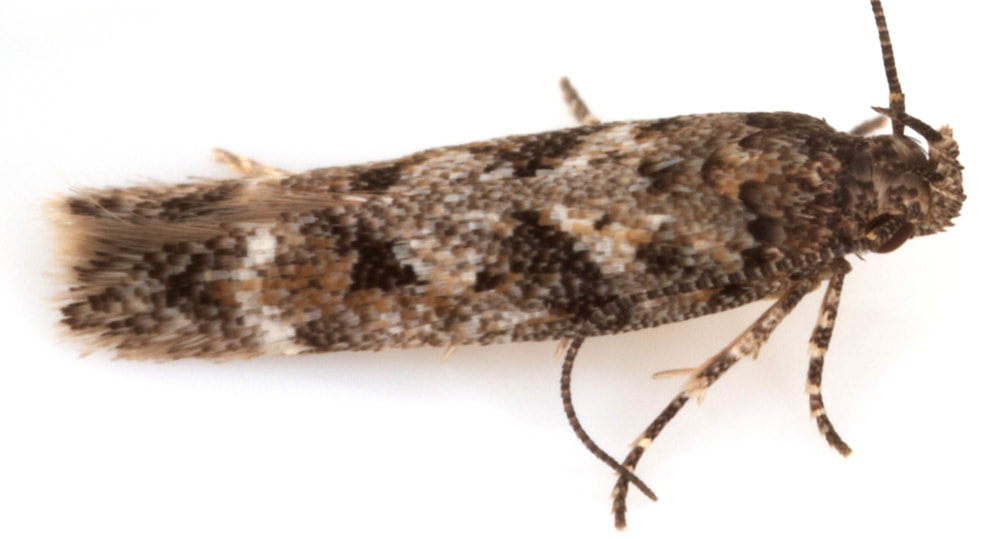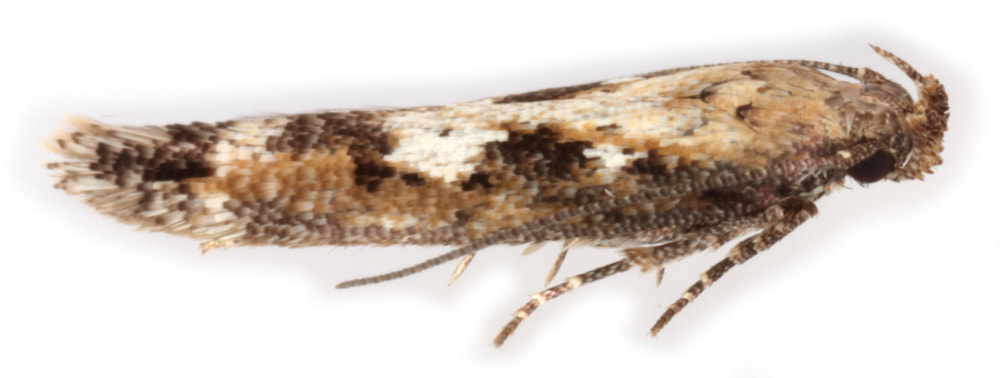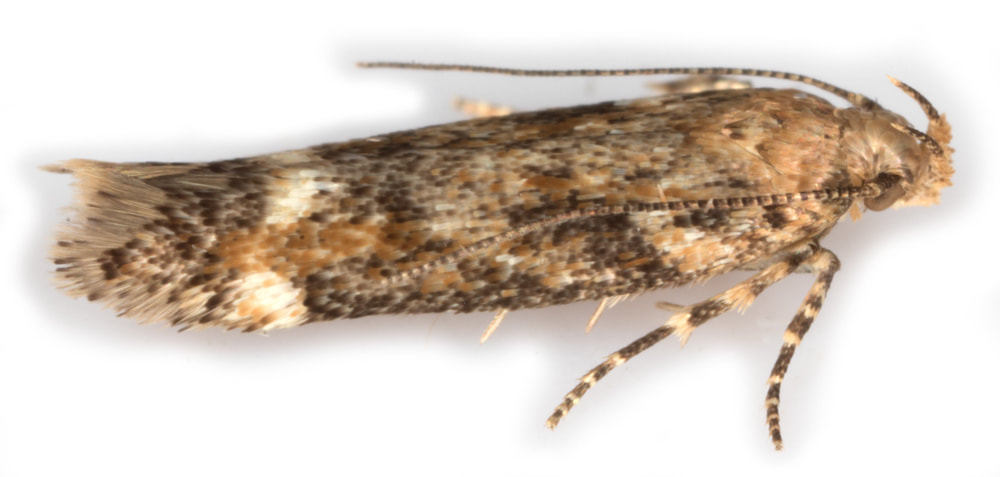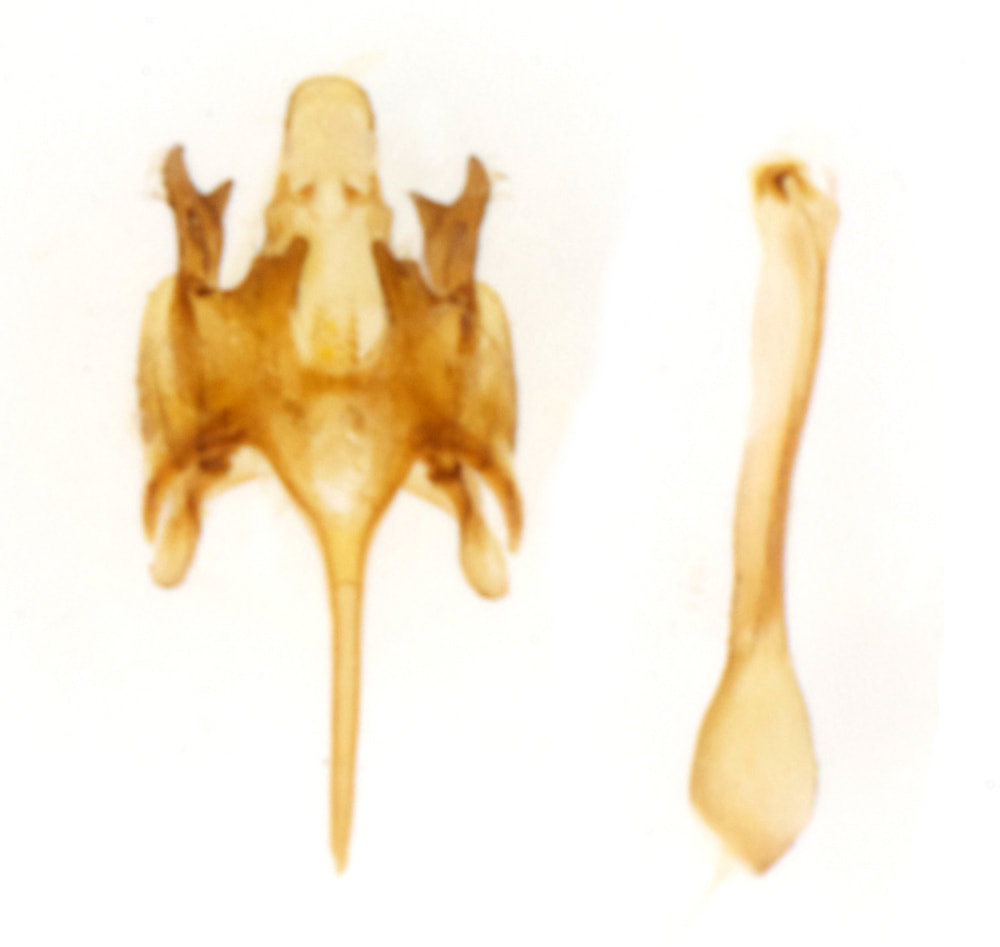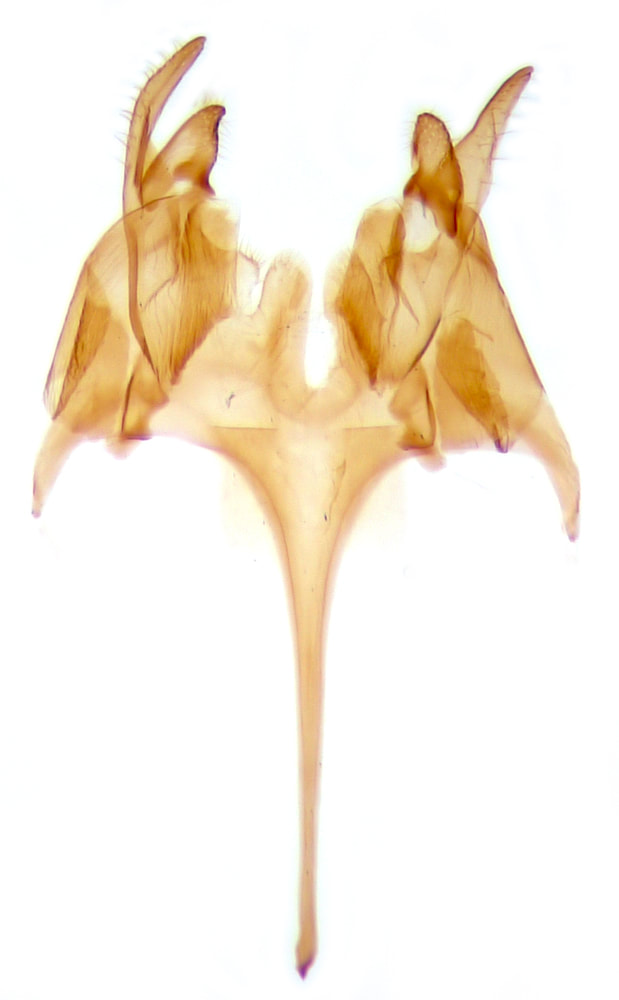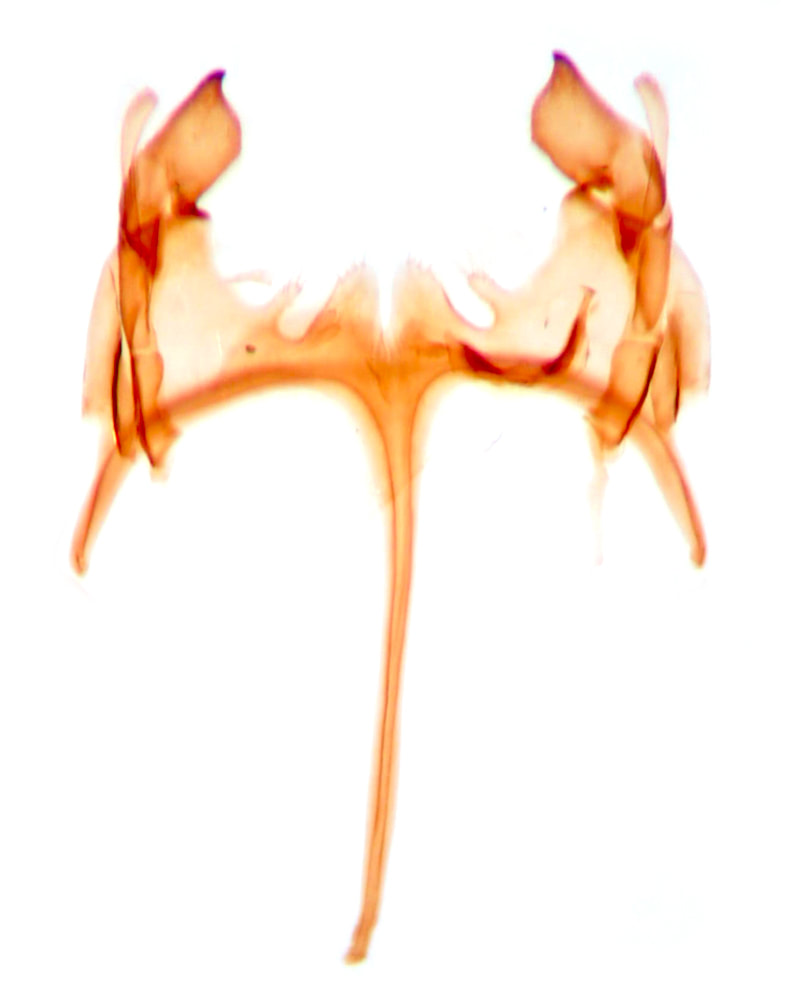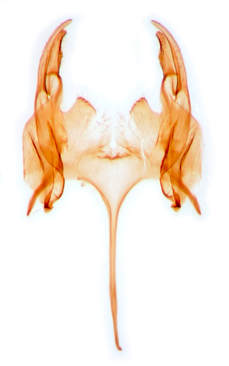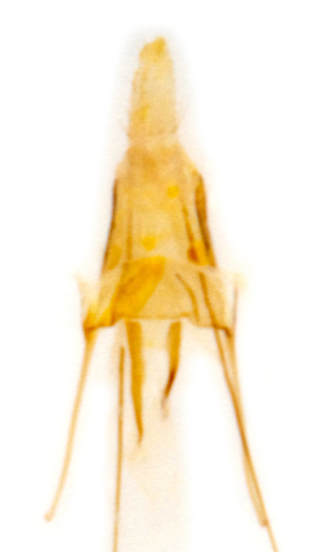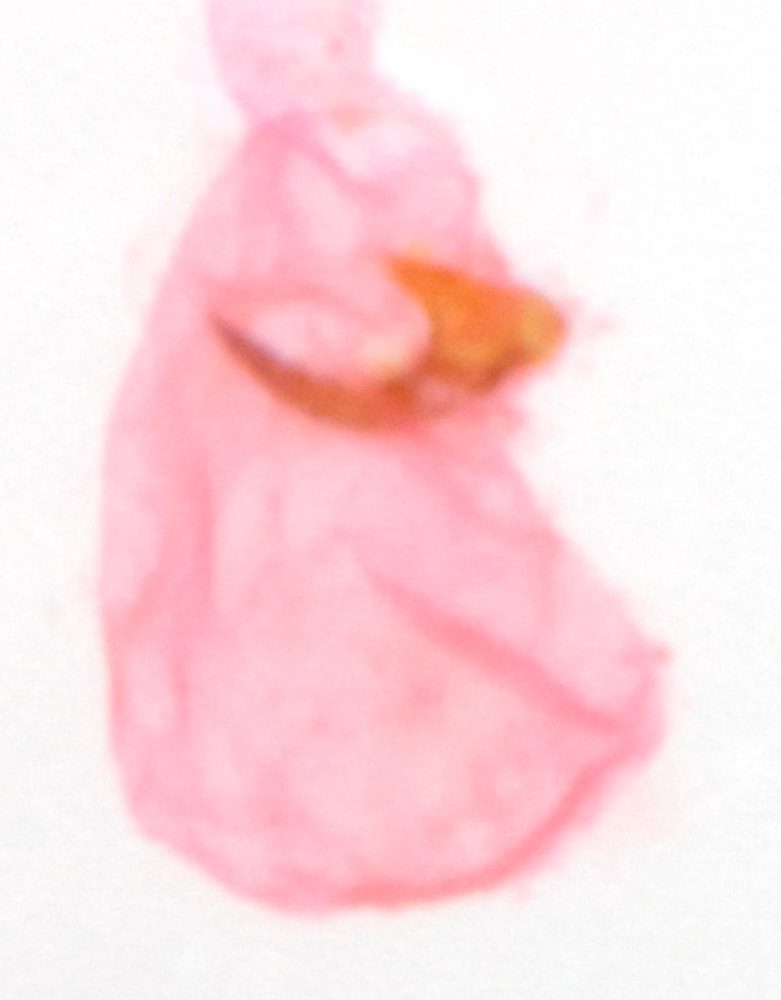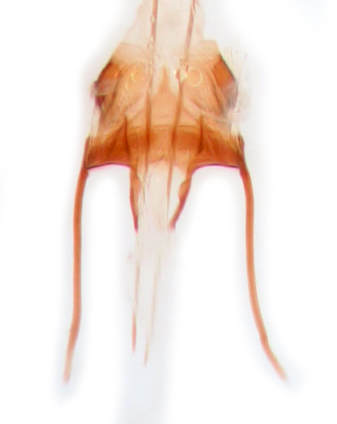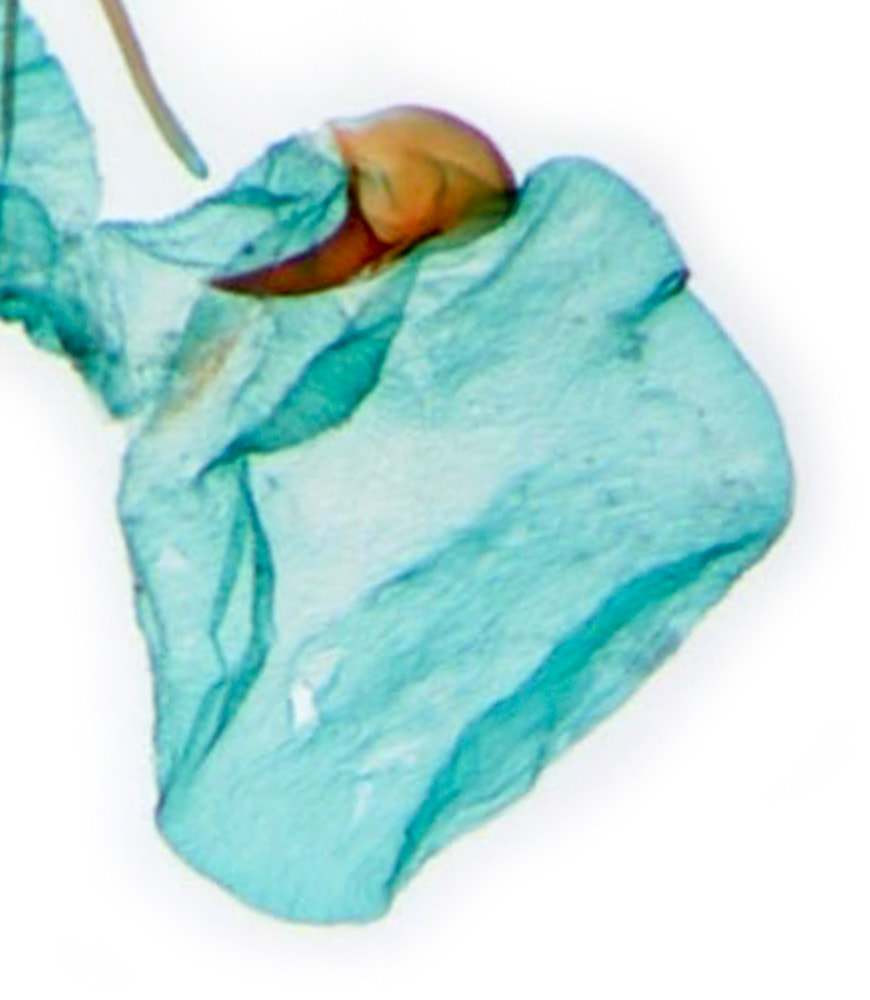Caryocolum |
Generic features: Species in this genus can generally be recognised from their basic forewing pattern of four blackish marks: 1) on costa at 1/6 elongate, 2) on fold at 1/3 elongate, 3) 1st discal spot at 2/5 small, 4) 2nd discal at 3/5 elongate; the costal and plical marks may be joined by a dark bar; pale subterminal fascia at 4/5, usually interrupted to form costal and dorsal spots. Antennal flagellum ringed; S3 of labial palp never ringed but may have a white tip (Parachronistis albiceps, Recurvaria nanella and Teleiodes sequax could be mistaken for Caryocolum species, but all have dark rings on S3 of the labial palps). The12 extant British species are similar and somewhat variable making distinction based on external features problematic. Nevertheless MBGBI4.2 provides a key which can be used as a guide, but most specimens will require genital examination for confident identification.
Key to Caryocolum species |
|||
Thorax whitish |
Dark bar between costa and fold at ⅙ obscuring spots |
Forewing with terminal fuscous dots; ws>11mm |
C.blandella |
Forewing without distinct terminal dots; ws<11mm |
C.blandulella |
||
Without dark bar at ⅙ |
ws 12mm+ |
C.kroesmanniella |
|
Weakly marked bar at ⅙ not obscuring spots |
Costal and tornal white spots at ⅘ |
C.blandelloides |
|
Complete pale fascia at ⅘ |
C.huebneri |
||
Thorax fuscous or ochreous# |
Forewing without orange-ochreous markings |
Forewing with 4 white spots |
|
Dark bar or patch between costa and fold between ⅙ and ⅓ |
Dark patch at 60-80° to costa* |
C.proxima |
|
Dark patch extended along costa as a triangle |
C.tricolorella |
||
Frons silvery** |
|||
Dark patch with proximal whitish fascia and distal whitish triangle |
|||
Dark patch with proximal orange fascia and distal orange triangle |
C.viscariella |
||
Costa fuscous but no dark patch between costa and fold*** |
Forewing with whitish triangle at ½ |
||
Forewing without whitish triangle |
# It can be problematic to decide that a pale ochreous thorax is not "whitish"
* The alternative at this couplet has the dark patch at ~45° to costa. There is a problem in establishing the angle of the bar or patch to the costa, partly because the costa is curved and partly because the patch may not include a straight line. Specimens I have identified as C.junctella and C.alsinella appear to have the patch at 50-60° to the costa and this measure is consistent with other web images of these species. Web images labelled as C.proxima have the patch at about 60° to the costa and none come close to 80° - I doubt that distinction at this couplet can be reliably established.
** The alternative at this couplet is "frons shining pale ochreous-grey" - I feel certain that this cannot be reliably distinguished from "silvery"
***I am not convinced that this dark patch is absent in C.fraternella
* The alternative at this couplet has the dark patch at ~45° to costa. There is a problem in establishing the angle of the bar or patch to the costa, partly because the costa is curved and partly because the patch may not include a straight line. Specimens I have identified as C.junctella and C.alsinella appear to have the patch at 50-60° to the costa and this measure is consistent with other web images of these species. Web images labelled as C.proxima have the patch at about 60° to the costa and none come close to 80° - I doubt that distinction at this couplet can be reliably established.
** The alternative at this couplet is "frons shining pale ochreous-grey" - I feel certain that this cannot be reliably distinguished from "silvery"
***I am not convinced that this dark patch is absent in C.fraternella
Male genitalia keyed to genus in MBGBI4.2 by exclusion of everything else rather than from any positive features:
Abdo S8 divided into dorsal and ventral plates; uncus rounded, gnathos simple; valvae flat or tubular; sacculi present; saccus long. The species vary particularly in the shape of the saccus and the shape of the posterior margin of the vinculum.
A key will follow when more experience is gained.
Abdo S8 divided into dorsal and ventral plates; uncus rounded, gnathos simple; valvae flat or tubular; sacculi present; saccus long. The species vary particularly in the shape of the saccus and the shape of the posterior margin of the vinculum.
A key will follow when more experience is gained.
|
|
Female genitalia: All have much longer posterior than anterior apophyses; a sclerotised section of ductus bursae extending a short distance from the ostium and forming a more or less discernible introitus; and a single thorn like signum on the right side of the bursa copulatrix near its junction with the ductus bursae. The species differ mainly in the extent of sclerotisation at the introitus and in the exact shape and size of the signum.
A key will follow when more experience is gained.
A key will follow when more experience is gained.
|
C.alsinella: linear sclerotisations on either side of introitus, that on left extending slightly further than that on right and >½ length of an anterior apophysis; signum a large strongly curved thorn
|
C.marmorea: linear sclerotisations on either side of introitus, extending <½ length of an anterior apophysis; signum a moderate curved thorn
|
